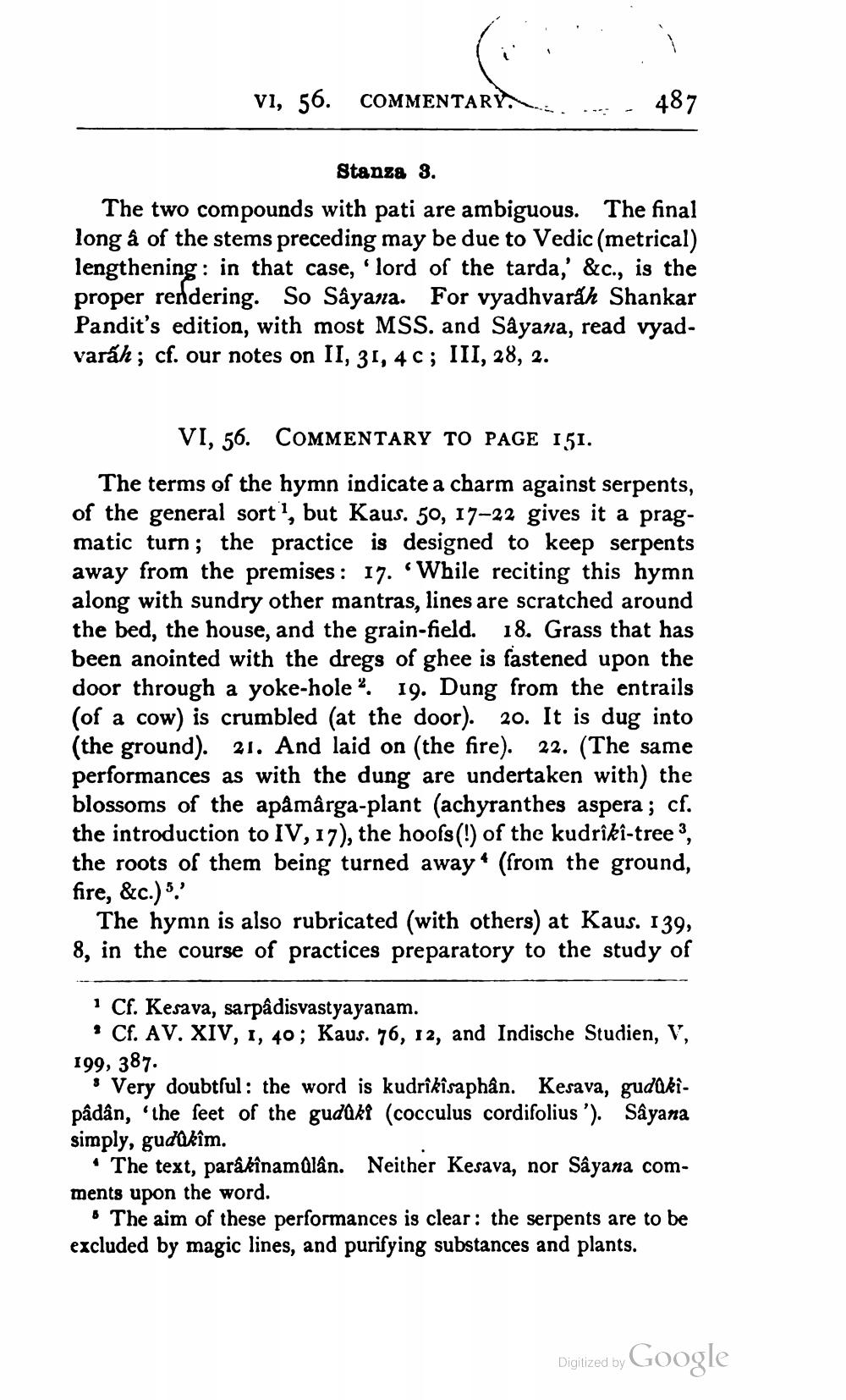________________
COMMENTARY
Stanza 3. The two compounds with pati are ambiguous. The final long å of the stems preceding may be due to Vedic (metrical) lengthening: in that case, 'lord of the tarda,' &c., is the proper rendering. So Sâyana. For vyadhvaráh Shankar Pandit's edition, with most MSS. and Sâyana, read vyadvaráh; cf. our notes on II, 31, 40; III, 28, 2.
VI, 56. COMMENTARY TO PAGE 151. The terms of the hymn indicate a charm against serpents, of the general sort", but Kaus. 50, 17-22 gives it a pragmatic turn; the practice is designed to keep serpents away from the premises : 17. "While reciting this hymn along with sundry other mantras, lines are scratched around the bed, the house, and the grain-field. 18. Grass that has been anointed with the dregs of ghee is fastened upon the door through a yoke-hole? 19. Dung from the entrails (of a cow) is crumbled (at the door). 20. It is dug into (the ground). 21. And laid on (the fire). 22. (The same performances as with the dung are undertaken with) the blossoms of the apâ mârga-plant (achyranthes aspera ; cf. the introduction to IV, 17), the hoofs(!) of the kudrîkî-tree 3, the roots of them being turned away * (from the ground, fire, &c.) 5.
The hymn is also rubricated (with others) at Kaus. 139, 8, in the course of practices preparatory to the study of
1 Cf. Kesava, sarpâdisvastyayanam.
Cf. AV. XIV, 1, 40; Kaus. 76, 12, and Indische Studien, V, 199, 387.
Very doubtful: the word is kudrîkîsaphân. Kesava, gudakipâdân, 'the feet of the gudaki (cocculus cordifolius '). Sâyana simply, gudůkim.
• The text, parâkînamQlân. Neither Kesava, nor Sâyana comments upon the word.
The aim of these performances is clear: the serpents are to be excluded by magic lines, and purifying substances and plants.
Digitized by Google




